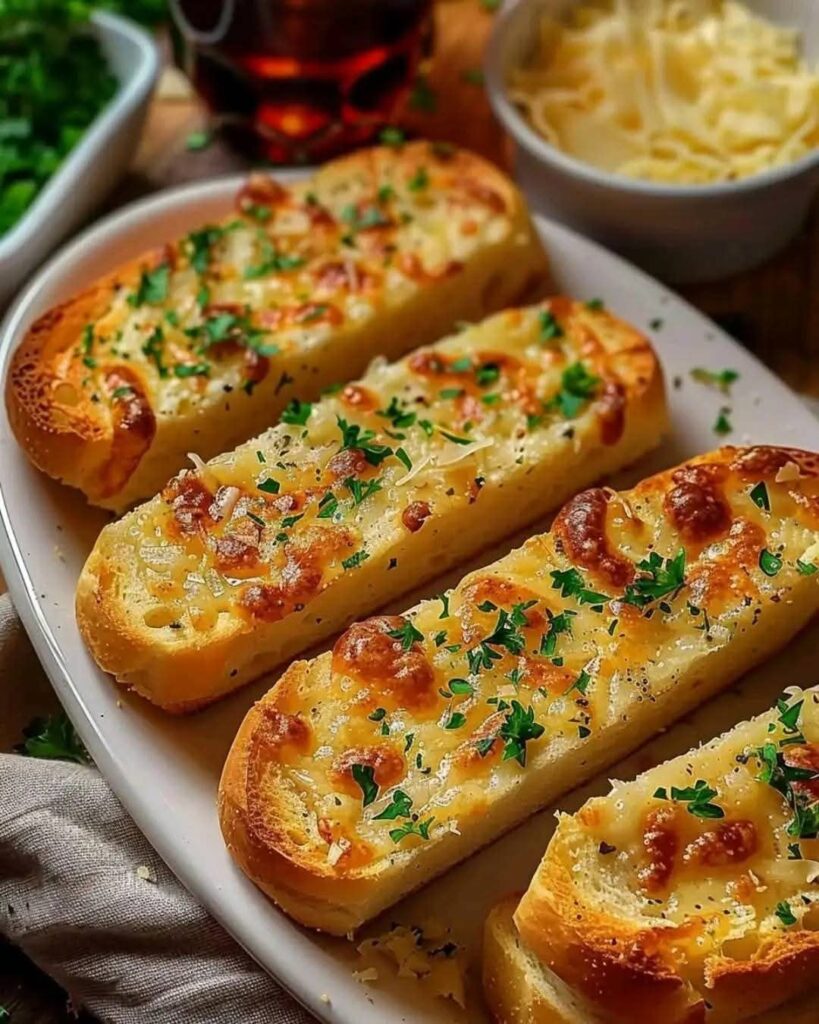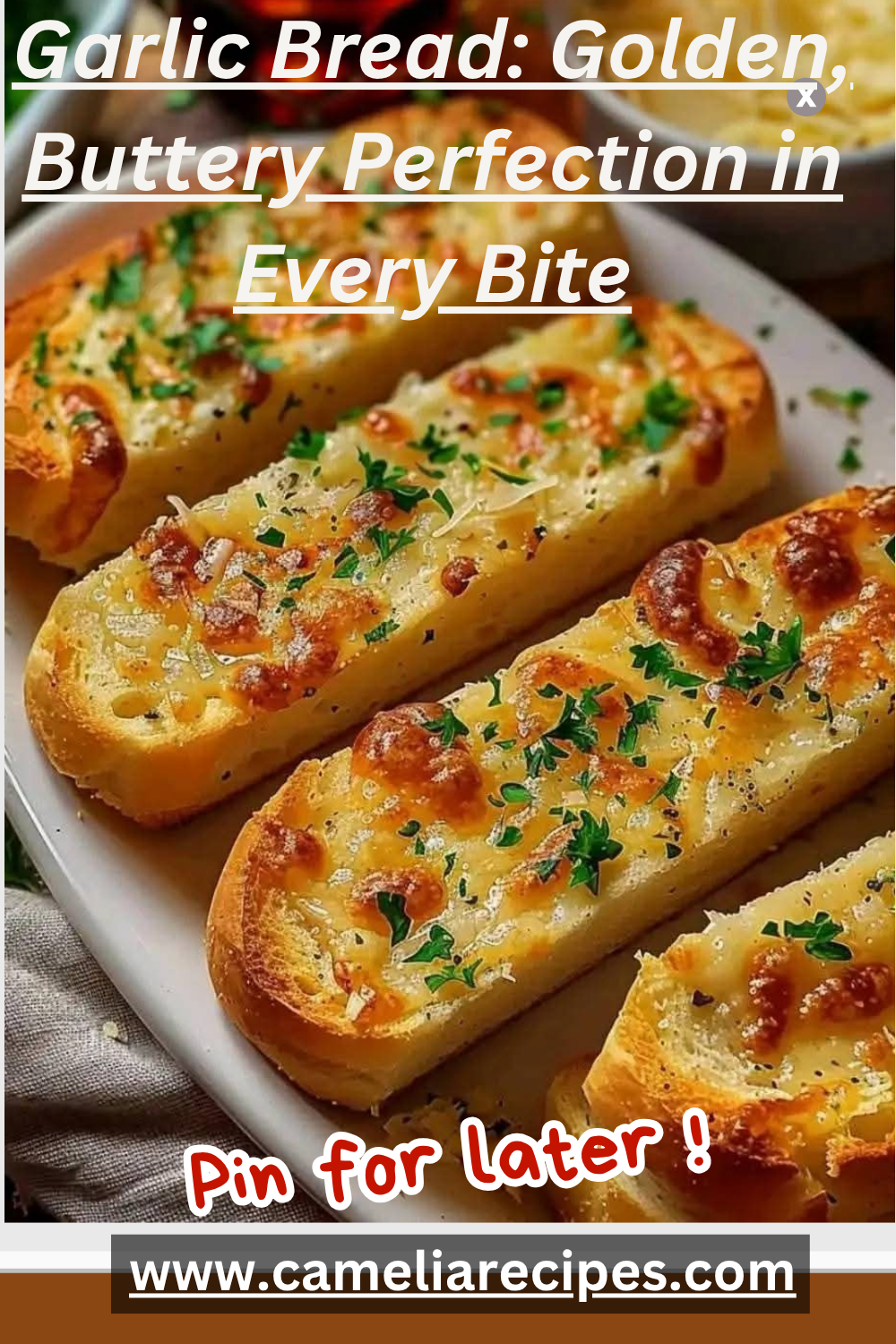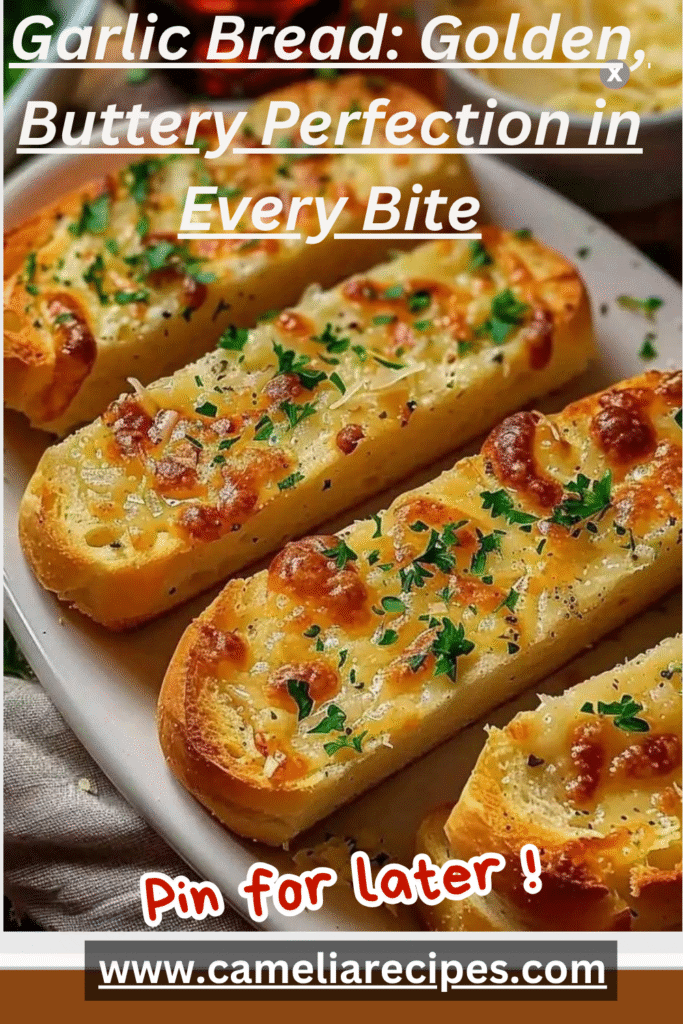Garlic bread, with its irresistible aroma, golden crust, and buttery interior, is more than just a side dish—it’s a universal comfort food. Whether served alongside a hearty bowl of spaghetti or enjoyed on its own as a savory snack, garlic bread offers a sensory experience few foods can rival. This beloved staple is simple in ingredients yet sophisticated in flavor, marrying the boldness of garlic with the richness of butter and the subtle freshness of herbs. But beyond its mouthwatering appeal lies a rich history and nutritional story worth telling. In this comprehensive guide, we explore the origins, benefits, and precise methods of crafting the perfect garlic bread from scratch.
The History and Origins of Garlic Bread
Garlic bread, as we know it today, owes its existence to centuries of culinary evolution rooted in Mediterranean traditions. The concept of flavoring bread with garlic and oil dates back to Ancient Rome, where people would rub garlic and olive oil on flatbreads or rustic loaves for added taste. Garlic was not only a flavorful addition but was also believed to have medicinal and protective properties.
Over time, this practice spread throughout Southern Europe, especially in Italy, where bruschetta—grilled bread rubbed with garlic and drizzled with olive oil—became a popular appetizer. It wasn’t until Italian immigrants brought their culinary customs to the United States that garlic bread evolved into its modern form. By swapping olive oil for butter and incorporating local ingredients like Parmesan cheese, a new version was born: oven-baked, butter-soaked garlic bread with a golden, crisp texture.
In the United States, garlic bread became a staple in Italian-American households and restaurants, often paired with pasta dishes such as spaghetti or lasagna. Today, it continues to be a cherished item around the globe, celebrated for its simplicity, versatility, and bold flavor.
Ingredients Breakdown
Let’s look at the ingredients needed to make this classic garlic bread and what each contributes to the final product.
1. French or Italian Bread
The base of garlic bread, this loaf offers a crisp crust and soft interior, ideal for absorbing the garlic butter spread. French bread brings a lighter, airier crumb, while Italian bread offers a denser bite.
2. Unsalted Butter (½ cup, softened)
Butter is the heart of the spread, lending richness and helping to carry the flavor of garlic and herbs throughout the bread. Softened butter spreads easily, ensuring even coverage.
3. Garlic Cloves (3, minced)
Fresh garlic infuses the butter with a sharp, pungent aroma and flavor that mellows slightly during baking. Minced finely, it melts into the butter and permeates the bread.
4. Fresh Parsley (2 tbsp, chopped)
Parsley provides a refreshing contrast to the richness of the butter and garlic. Its bright green hue also enhances the visual appeal.
5. Garlic Powder (½ tsp)
Garlic powder adds a secondary layer of flavor, deepening the garlic profile and balancing out the sharper taste of fresh cloves.
6. Grated Parmesan Cheese (½ cup, optional)
This optional addition contributes umami depth and a savory edge. When baked, it adds a slightly crispy and salty topping that enhances the texture.
7. Salt (to taste)
A pinch of salt enhances the overall flavor, balancing the richness of the butter and the sharpness of the garlic.
Health Benefits of the Ingredients
While garlic bread is often seen as a decadent treat, its individual components offer surprising health benefits:
Garlic
Garlic is renowned for its antibacterial, antiviral, and antifungal properties. It contains allicin, a compound that has been shown to reduce cholesterol, support cardiovascular health, and bolster the immune system. Regular consumption of garlic may even help lower blood pressure and combat inflammation.
Butter
Although butter is calorie-dense, it also contains fat-soluble vitamins such as A, D, E, and K. Grass-fed butter, in particular, includes beneficial fatty acids like CLA (conjugated linoleic acid) and butyrate, which support digestion and reduce inflammation in small amounts.
Parsley
More than a garnish, parsley is a rich source of vitamin C, vitamin K, and antioxidants. It promotes bone health, supports immune function, and has diuretic properties that may help with fluid retention and detoxification.
Parmesan Cheese
This aged cheese is packed with calcium, protein, and phosphorus, supporting bone strength and muscle maintenance. It also contains less lactose than many other cheeses, making it easier to digest for some people.
Bread
French and Italian breads, especially when made with whole grains, provide carbohydrates for energy and fiber for digestion. Moderation is key, especially for those monitoring carbohydrate intake.

Detailed Preparation Guide
Crafting the perfect garlic bread is a balance of technique, timing, and attention to detail. Follow these steps carefully to ensure buttery, golden success:
Step 1: Preheat the Oven
Begin by setting your oven to 375°F (190°C). A properly preheated oven ensures even cooking and a crisp, golden crust.
Step 2: Prepare the Garlic Butter Mixture
In a mixing bowl, combine the ½ cup softened butter, 3 minced garlic cloves, 2 tablespoons chopped parsley, ½ teaspoon garlic powder, and ½ cup grated Parmesan cheese (if using). Add a pinch of salt, and stir until the mixture is smooth and well-integrated. The consistency should be creamy and easy to spread.
Step 3: Prepare the Bread
Take your loaf of French or Italian bread and slice it in half lengthwise. This exposes more surface area for the butter mixture and allows for a crispy top.
Step 4: Spread the Mixture Generously
Using a butter knife or spatula, spread the garlic butter mixture evenly across the cut sides of the bread. Make sure every inch is covered, especially the edges.
Step 5: Bake to Perfection
Place the prepared bread, buttered side up, on a baking sheet. Bake in the oven for 10-12 minutes, or until the butter has melted fully and the surface begins to turn a beautiful golden brown.
Step 6: Optional Broil for Crispiness
For added crunch, switch the oven to the broil setting and broil for 1-2 minutes. Keep a close eye to avoid burning—the difference between perfect and burnt garlic bread can be seconds.
Step 7: Slice and Serve
Remove from the oven, let it cool slightly, then slice into individual servings. Serve warm with pasta, soup, or salad.
Nutritional Information (Per Serving)
Each slice of homemade garlic bread offers a robust blend of macronutrients and micronutrients. On average, a serving contains around 180–220 calories, depending on the amount of butter and cheese used. It offers 10–12 grams of fat, primarily from butter, 18–20 grams of carbohydrates from the bread, and 2–4 grams of protein, especially if Parmesan is included. In terms of vitamins and minerals, you can expect small but significant amounts of vitamin A, calcium, iron, and vitamin C (from the parsley). While rich and satisfying, it’s best enjoyed in moderation, particularly for those watching sodium or calorie intake.
Frequently Asked Questions (FAQ)
1. Can I make garlic bread without using butter?
Yes. You can substitute butter with olive oil for a lighter, dairy-free option. It brings a slightly different flavor but remains delicious.
2. Can I use pre-minced garlic from a jar?
While convenient, pre-minced garlic can have a milder and less fresh taste. For the boldest flavor, fresh garlic cloves are preferred.
3. How do I store leftover garlic bread?
Wrap it in foil and store in the refrigerator for up to 3 days. Reheat in the oven at 350°F for 5–7 minutes to regain crispiness.
4. Can I freeze garlic bread?
Yes, garlic bread freezes well. After preparing but before baking, wrap tightly and freeze. Bake from frozen at 375°F for 15–20 minutes.
5. What dishes pair best with garlic bread?
Garlic bread pairs beautifully with pasta dishes, soups like tomato basil or minestrone, and salads like Caesar or caprese.
6. Is garlic bread vegetarian?
Yes, as long as you use vegetarian-friendly cheese or skip the Parmesan, garlic bread is suitable for vegetarians.
7. Can I add other herbs or spices?
Absolutely. Basil, oregano, thyme, or red pepper flakes can be added for extra flavor. Be creative with your herb blend.
8. How do I make it gluten-free?
Use a gluten-free baguette or bread as your base. Ensure all other ingredients are certified gluten-free to avoid cross-contamination.
9. Why is my garlic bread soggy?
Overloading the bread with butter or not baking long enough can cause sogginess. Stick to the recommended butter amount and bake until golden.
Conclusion
Garlic bread is the kind of dish that transcends trends and generations. With its crispy exterior, soft buttery center, and layers of savory flavor, it captures everything that’s comforting about home cooking. Whether you’re preparing it as a quick side for a family dinner or showcasing it as the star of a party platter, mastering garlic bread means understanding its humble roots and celebrating its timeless appeal. From its Roman origins to your modern kitchen, garlic bread continues to prove that even the simplest recipes can offer the richest rewards
Discover also :
Irresistible Sweet Chili Chicken Recipe

